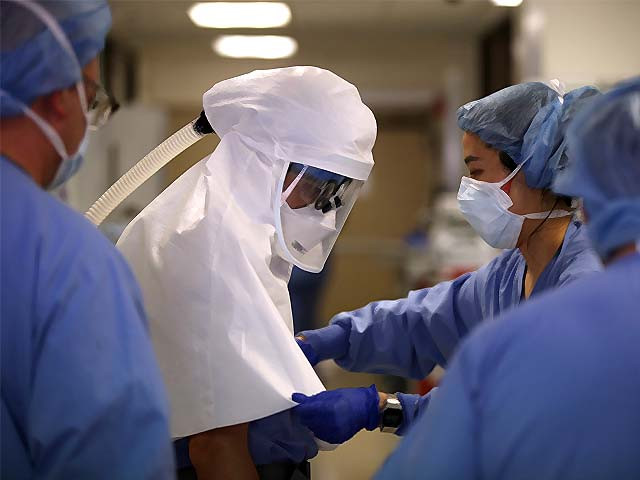Reclining on a sofa in the doctor’s lounge in anticipation of the Shawwal moon and discussing the conflict between different stake holders with a fellow anaesthesia colleague, I heard one of my pagers go off. Carrying three separate pagers these days, I had set specific tunes on each which gives me a split-second advantage of knowing and prepping for what might be in store; kind of a thing I like doing. By the sound of it, this was a rush call which meant a patient somewhere is either crashing or about to crash and they may need an advanced airway to maintain oxygen supply throughout the body: a typical anaesthesiologist’s job. And sure enough, the pager read: “Rush, Emergency Room.”
By the rule book, we have three minutes in which to respond to a rush call and be present at the site and so I grabbed my phone, pagers and respirator from the table and ran for it. Climbing down two flights of stairs at a pace which might have given Usain Bolt a run for his money, I looked at my watch which, apart from showing that I had about a minute more to reach the ER, also signified how my heart rate soared from 75 to a 120 beats per minute; a combined effect of physical activity and adrenaline coursing through the body.
Upon reaching the ER, I was informed that the patient is in fact Covid-19 positive and needs to be intubated as he is in severe respiratory distress. This changed the situation significantly. For one, advanced airway management of a Covid-19 patient (which in simple words mean putting a tube in the patient’s windpipe to restore breathing and oxygen supply and for connection to a ventilator) require a trolley full of Personal Protective Equipment (PPE) and specialised airway management gear. Other than that, airway management of a Covid-19 patient is perhaps the most risky procedure a doctor can perform. Opening the mouth and putting a tube through it is essentially playing in a field loaded with virus. One slight mis-step and you will be exposed to a truckload of virus. It’s like a ticking time-bomb waiting to go off. You have to diffuse it in order to save one life but make sure to not accidentally let it off and harm countless others, including yourself.
It took me another 10 minutes to get into the required protective gear. The patient was deteriorating but not crashing which bought us time. Even then, there is no urgency in a pandemic and precautionary measures are of utmost importance in order to stem the spread of the disease. Just to give a brief overview of the entire process; its starts with hand hygiene, followed by donning on disposable shoe covers, a surgical cap, mask and headcover. Then comes perhaps the most important protective gadget called the Powered Air Purifying Respirator (PAPR). This device basically takes in ambient air contaminated by the virus, filters it, and pumps the now clean air into the head unit. Follow this up with a sterile gown and two pairs of gloves and you are all set to step into the Covid-19 zone for airway management.
As I stepped up to the patient, I saw a man in his late 50s gasping for air, barely reaching the lower limit of the required blood oxygen concentration (as displayed on the monitor) even though he was consuming fresh oxygen at about 10 litres per minute. He looked at me with pain and desperation in his eyes, he could barely speak. I immediately patted him on the shoulder and reassured him that everything will be alright, which I knew deep down inside that it probably would not be. I cranked up the oxygen even more, dosed him with a few choice medicines and proceeded to intubate him and put him on a ventilator. This entire sequence has become a routine for anaesthesiologists at every tertiary care setup receiving Covid-19 patients as the surge increases.
Walking back to the lounge, I wondered about the antagonism and unrest against this entire Covid-19 crisis. Despite a massive surge in the number of cases, what we are witnessing is blatant disregard of government set SOPs, violence against healthcare professionals, wild conspiracy theories and overall denial regarding the seriousness of the situation. Is this a result of fear of the unknown or just ignorance in the face of adversity? Could it be due to a lack of information and education about the impact and the severity of the disease? If so, the above mentioned anecdote might shed some light on the grievous state of affairs. People are suffering and dying and with no verified treatment option available as of now, there is a growing concern that we are going to run out of healthcare facilities for Covid-19 patients. We have a limited number of ventilators in the city and even though hospitals are trying to establish more dedicated Covid-19 ICUs to cater to the recent surge, the effort is not going to be enough.
We have to contain the spread of the disease in order to lessen the burden on our healthcare system. This is not just about beds and ventilators anymore but doctors and healthcare personnel as well who, because of the recent surge in the spread of the virus, are being infected and quarantined in huge numbers now. We are at war and the battle has long since moved out of the hospitals and Covid-19 treatment facilities. Doctors are now the last line of defence and it is in fact the people who are the frontline warriors with simple and inexpensive weapons of choice: safe distancing, hand hygiene and face masks. As of now, the only way to stop this impending catastrophe is to somehow contain the spread of the virus. We may not be able to restrain it fully, but we may be able to slow it down enough and thus prevent our healthcare system from collapsing altogether.



COMMENTS
Comments are moderated and generally will be posted if they are on-topic and not abusive.
For more information, please see our Comments FAQ